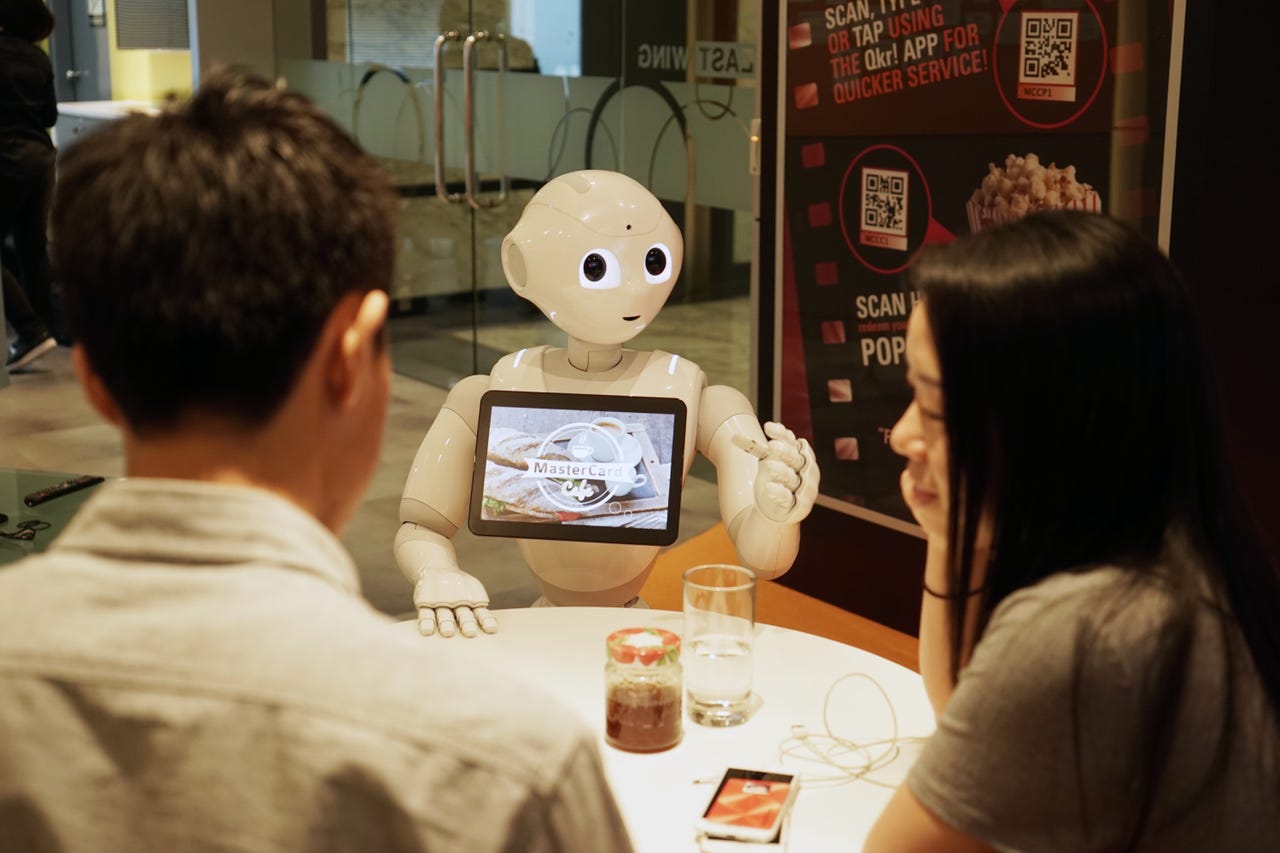MasterCard, Pizza Hut Asia try robotic commerce: Pepper will take your order now


MasterCard and SoftBank's Pepper robot are preparing to take Pizza Hut Asia orders to gauge customer interaction and service by the end of the year. Get used to these headlines as automation takes hold and raises questions about the future of human labor.
The collaboration is among the first e-commerce applications for Pepper, which is a humanoid robot. MasterCard has equipped Pepper with MasterPass, a digital payment service. As detailed earlier by Asha Barbaschow, Pizza Hut Asia is the launch partner for the effort, which came from MasterCard Labs in Singapore.
What MasterCard is really gunning for is so-called "conversational commerce experiences to merchants and consumers." Pepper will provide customer service, assess to information and sales pitches. Pizza Hut is piloting the order-taking and engagement with Pepper.
Will Pepper do better than humans, especially those younger ones that text more than talk? Perhaps.
More on Pepper: Google I/O: SoftBank, maker of AI Pepper robot, has news for U.S. developers | IBM bringing Watson's brainpower to SoftBank's Pepper robot | Brisk sales for Pepper, but Romeo is primed to be the first hit humanoid | Emotional robot Pepper goes on sale, first run sells out
The Pizza Hut Asia effort is notable in the U.S. given that an increase in the minimum wage is likely to speed up a move toward more automation. Another must read on the labor vs. automation topic is HfS Research's Phil Fersht weekend rant on the subject. He wrote:
It suddenly dawned on me what the core issue is with the future of the workplace: the simple fact that company leaders and their stakeholders started viewing employees as walking costs at some stage over the last 30 years, and have devoted a huge amount of focus and energy trying to figure out how to remove as many of them from their business as possible... without it impacting the top line.
Surely, people, human labor should be viewed as a valuable commodity that adds value to a business, not some burden on the profit margin that needs to be eliminated at all costs? So what's really gone amiss here?
Fersht makes valid points that people are performing tasks that don't align with business value. Part of the blame falls on employees as well as companies. But from a CXO standpoint, one of the core goals is to nurture what Gartner dubs a digital workforce. You'll be all about your algorithms. How much can digital replace these walking costs called humans?
Also: Can retailers automate, use smart machines and keep human touch?
Pepper will be able to engage as a consumer greets the robots and taps MasterPass or scans a QR code held by the robot. From there, Pepper will assist consumers with recommendations, information and checking out. Pepper will initiate, approve and complete transactions. Assuming the NFC works, Pepper will be as good as a human and may even leave some of the attitude at home on a bad day.
MasterCard in a statement noted that the Pepper move isn't about replacing humans. A spokesman said:
We think that applications like these will vastly improve the quality of customer service and care. Self-service kiosks and ATMs have existed in the retail environment for years and customer frustration with these often non-intuitive user experiences is well known. Automated ordering is especially prevalent in Asia and with Pepper and digital payment applications like MasterPass, retailers can now bring more intelligence to what was previously reactive machines and provide better consumer experience. We see robots complementing services provided by people.
Restaurant businesses these days have become a blend of high-touch and high-tech experiences. The need to deliver personalized experiences is higher than ever before and the focus on ensuring customer experience remains competitive.
Core to Pizza Hut's digital transformation journey is the ability to make it easier for customers to engage, connect and transact with Pizza Hut. With an order-and payment-enabled Pepper, customers can now come to expect personalized ordering at our stores, reduce wait time for carryout, and have a fun frictionless user experience.
Agreed. There's no need to portray the Pepper and Pizza Hut Asia collaboration as anything more than a robotic commerce experiment. In addition, Japan's aging population will demand more robotic help.
But for us humans -- aka "walking costs" -- you can see where the labor ball is bouncing in a few years.